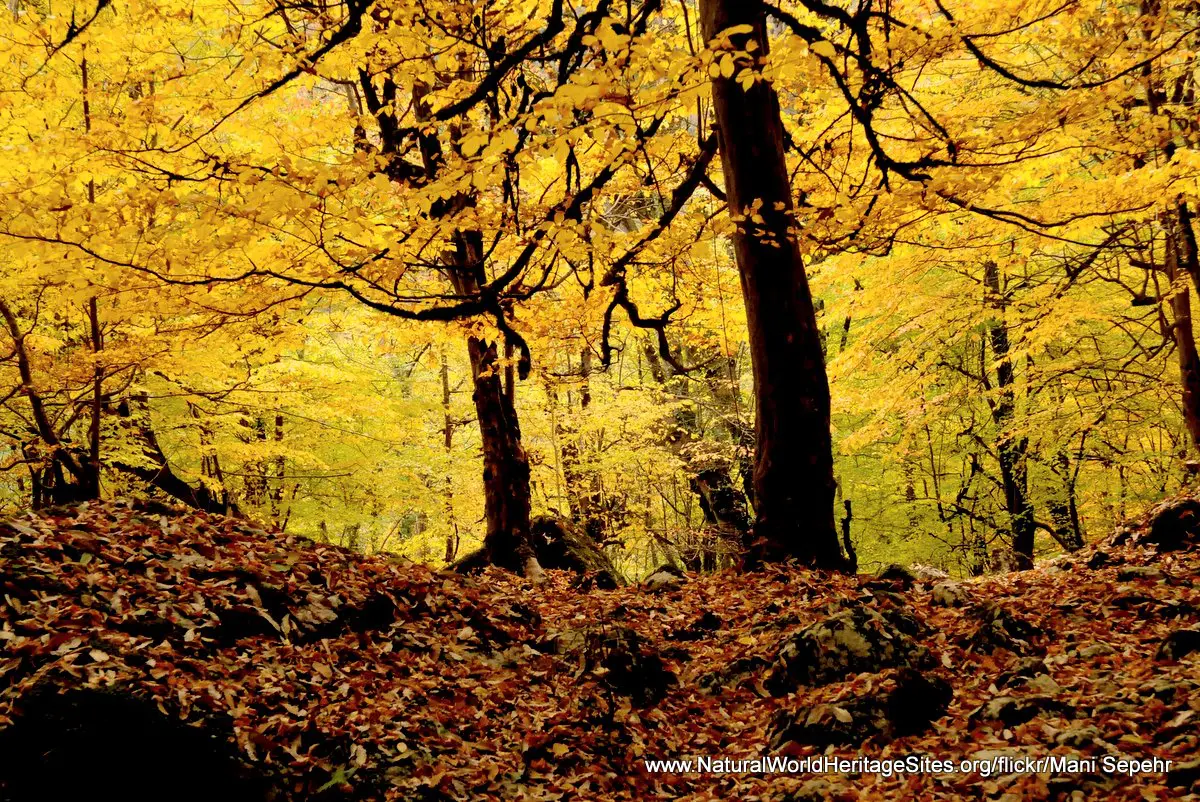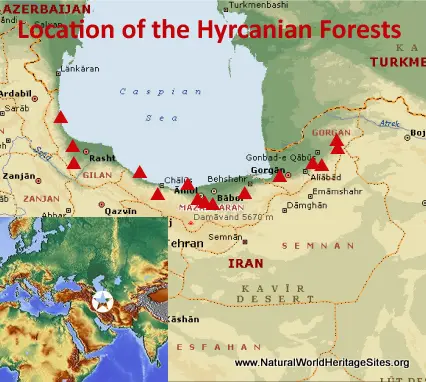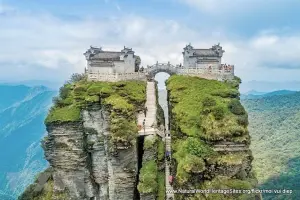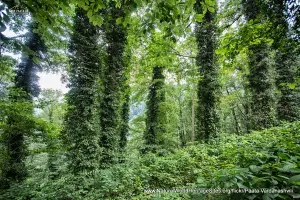EXPLORE the Hyrcanian Forests with this slideshow, check the location map and get all the facts and information below.
For slideshow description see right or scroll down (mobile). Click to view slideshow
Location and Values: The Hyrcanian Forests occupy a long strip of land on the slopes of the Tallish and Alborz Mountains, stretching for 850 km along the southern and south-eastern shores of the Caspian Sea. The term ‘Hyrcanian’ is derived from the name of a province in the ancient Persian and Macedonian empires that existed here. Forests have survived in this region for 25-50 million years, through the Quarternary glaciations which eliminated most of the temperate zone forests elsewhere. The area’s role as a historical refuge for species of plants and animals has resulted in a present-day fauna and flora that includes many relict, endangered and endemic species such as the Persian leopard and wild goat.
The world heritage site covers about 7% of Iran’s remaining Hyrcanian forest, spread across 15 component parts in three provinces (Gilan, Mazandaran and Golestan). These 15 reserved areas cover most of the features of Hyrcanian forest ecosystems, illustrating the processes of succession, evolution and speciation. One component (Kojoor) protects a remnant area of swamp forest on the coastal plain, while the other areas occupy the mountain slopes on mostly steep, inaccessible terrain.
Conservation Status and Prospects. According to IUCN’s evaluation of the nomination for the Hyrcanian Forests the conservation status and prospects for the site are satisfactory, although it has been extensively degraded over long periods of time and remains under high and growing pressure. The Hyrcanian Forest as a whole is becoming more and more fragmented, but the world heritage values of the 15 components of the site have not been irreversibly compromised and the natural processes remain functional in these areas. However, IUCN notes a number of potential threats to the site including (1) unsustainable levels of grazing by domestic livestock (2) illegal logging and deadwood collection, (3) poaching, (4) unregulated vehicle access on forest roads, (5) unsustainable tourism and (6) climate change (especially in relation to its possible effect on rainfall and cloud cover patterns).
Links:
Google Earth
Official UNESCO Site Details
IUCN Conservation Outlook
Birdlife IBA
Slideshow description
The slideshow ‘tells the story’ of the Hyrcanian Forests with a portfolio of photos that illustrate its landscape features and some of the typical plants and animals. It starts with some general views of the forest in early summer, with some attractive small waterfalls, followed by an area in the interior of the coastal swamp forest. There are further images of the forest in the golden hues of autumn, before the final part of the slideshow which illustrates the scenery at higher elevations in the mountains above the treeline where alpine meadows are found. Throughout the slideshow, some of the more notable plants and animals are shown, including (in order of appearance): Caspian tit, semi-collared flycatcher, wild goat, Persian leopard and Steppe eagle.
The following Flickr photographers and other sources are acknowledged with thanks for their contributions to this slideshow (as credited in the watermark of each photo): Aidin Nasiri, Alireza M, Amin Mirzaei, Steve Rooke, Farhad Einollahi, Hamid Narimani, Karl O’Brian, Khakezagross, Mahdi Kavandi, Mani Sepehr, Mohammad Rahmaty, Ninara, Ogun Turkay, Mandenno Photography, Khalifa, Sona Moayedzadeh, Michael Tholin, Taymaz and Zabara Alexander. Note that some of the close-up photos of animals are from other locations (including a Persian leopard in captivity), and these are included for illustrative purposes, as representatives of the species found in the area. In some cases, these may belong to different sub-species and/or vary slightly in appearance from individuals in the Hyrcanian Forests.
Factfile
Website Category:
Temperate & Boreal Forests
Area: 1295 km2
Inscribed: 2019
UNESCO Criterion:
- Ecological processes (ix);





